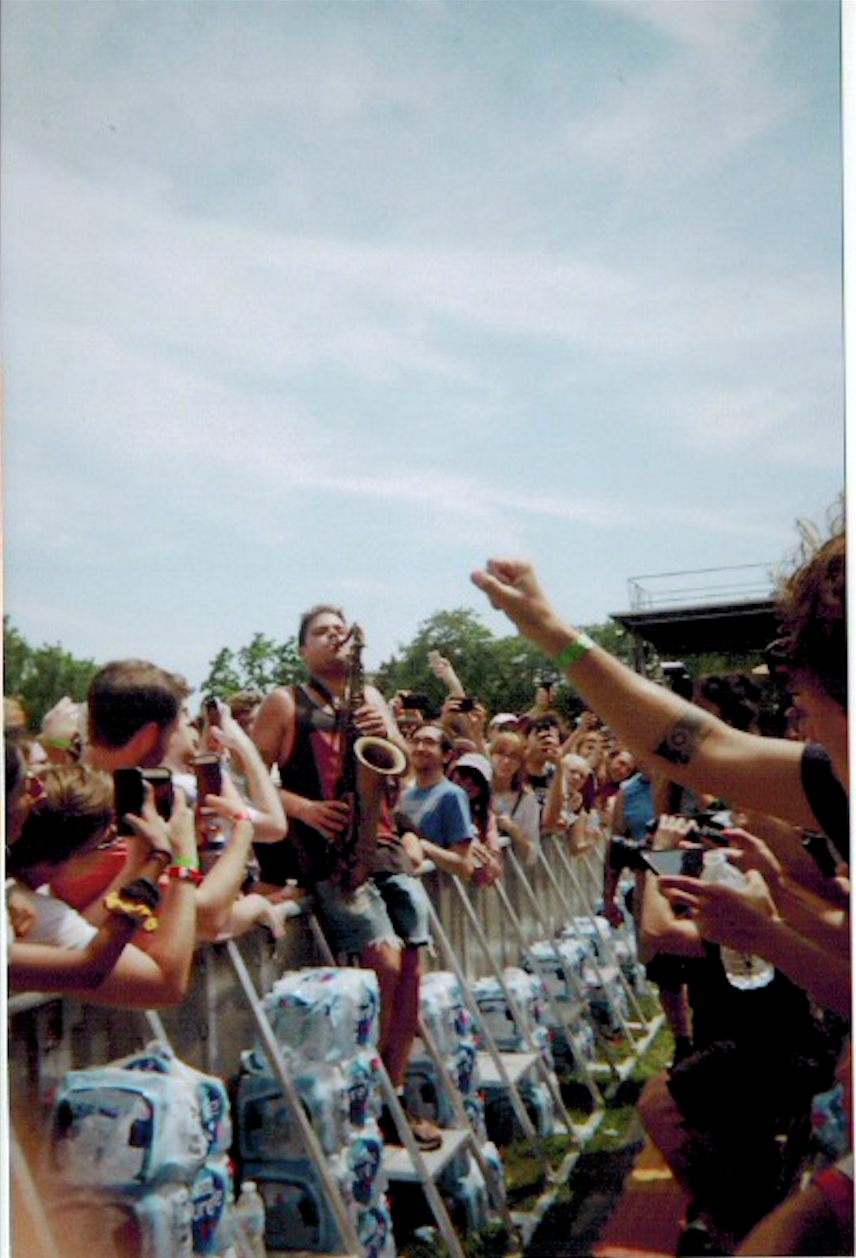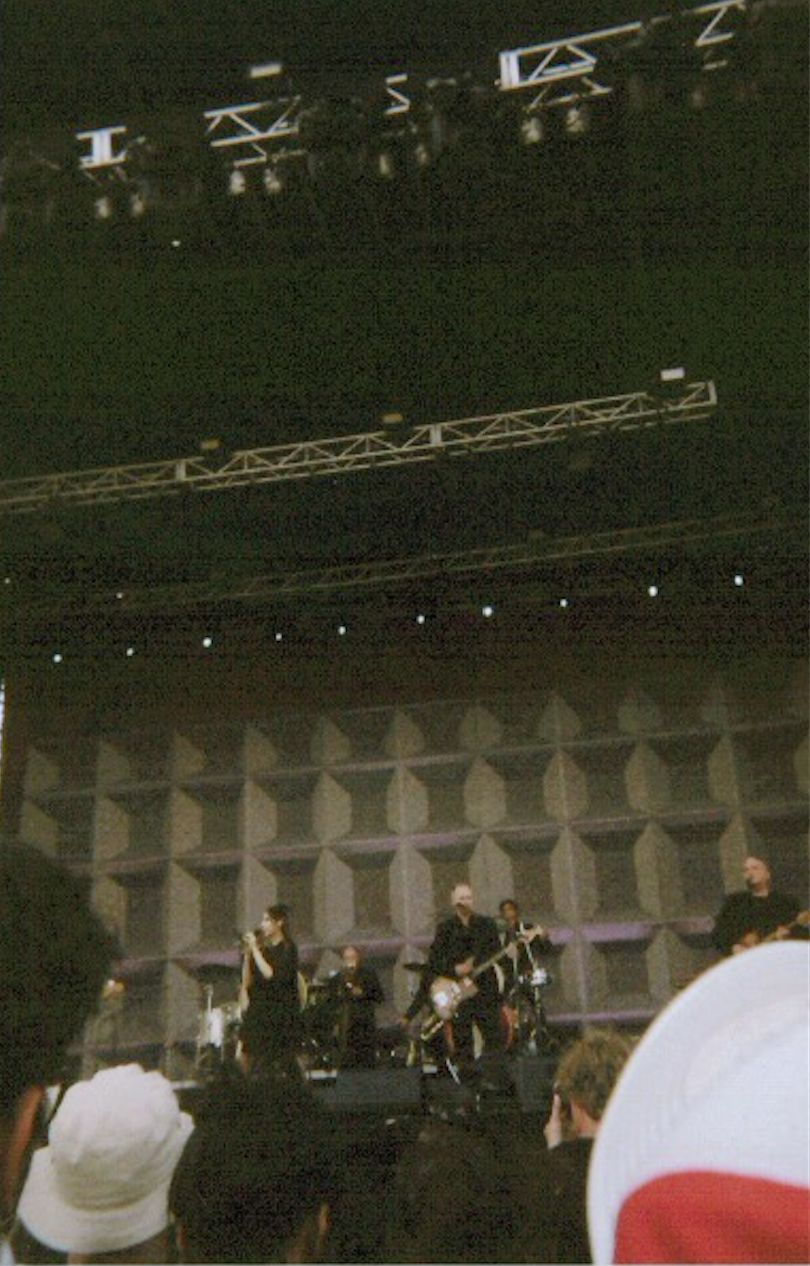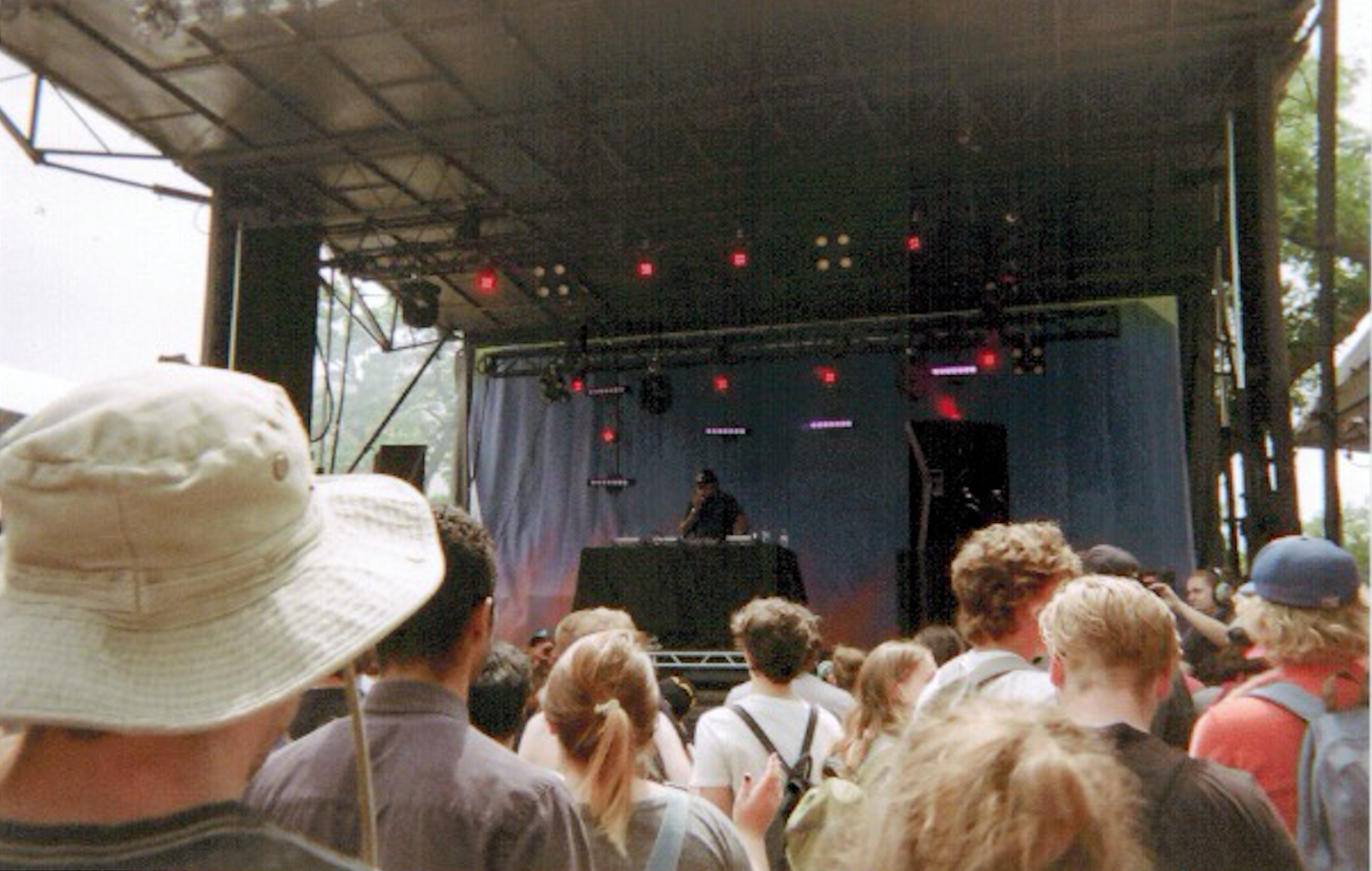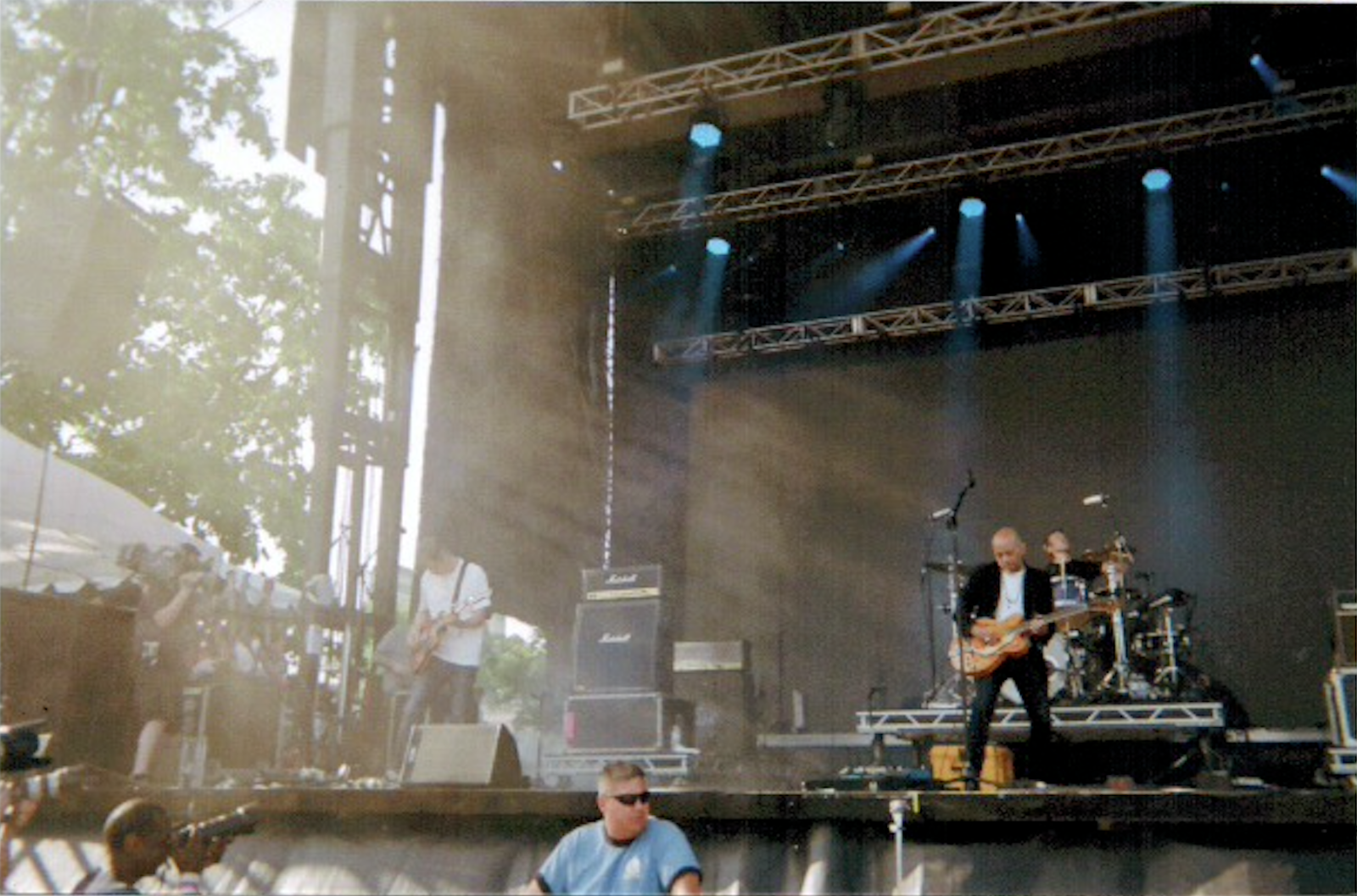
As a 20 year-old, there aren’t many contexts in which I feel entitled to speak authoritatively about the “old days.” This is undoubtedly for the best; even people who do have that privilege end up sounding like assholes most of the time. If any such opportunity did exist for myself, however, it would be when discussing Pitchfork Music Festival.
This July marked my seventh summer at Chicago’s Union Park, the place where Pitchfork has held their festival since its inception. 2017 was the fest’s twelfth year in existence, and I quickly realised that this meant I’d attended over half of all the Pitchfork Music Festivals ever thrown in Chicago. Admittedly, this not-so-impressive fact is nothing to get smug about. Pitchfork’s attendees are loyal enough that it’s fair to assume that many people there had been going to the fest for much longer than I. Still, these past seven years have given me an up-close view of how this music-nerd mecca has evolved since the turn of the decade.
From the moment Pitchfork’s lineup dropped (or, more accurately, leaked) this past spring, it was clear that the overlords at Pitchfork had booked their lineup a bit differently than in years past. That’s not to say the process itself was different — a mere mortal like myself couldn’t speak to that — but their goals for the festival’s lineup certainly seemed to have shifted, if only slightly.
Compared with previous years, the 2017 Pitchfork lineup seemed incredibly top-heavy. Not only was LCD Soundsystem’s headlining slot one of the fest’s biggest grabs in its existence (which band headlines Lollapalooza one year and then Pitchfork the next?!), but even the sub-headliners seemed larger than ever before. PJ Harvey and The Avalanches (*sob*) could have easily sat at the very top of the lineup any previous year. I won’t speculate as to why Pitchfork placed emphasis on the upper half of the lineup, but instead relate my own experience of the weekend. And spoiler alert: it felt different, but ultimately as enjoyable as ever.
D.C. punk outfit Priests were my friends and I’s first performance of the weekend. Their minimal yet ferocious brand of post-punk left me feeling much like I did after hearing their debut LP Nothing Feels Natural: impressed, but not quite enough so to bring me back for more. They sounded tight and had the energy necessary for their early afternoon scheduling, but ultimately just made me long for the similarly-timed set that Viet Cong played in 2015. The most lasting impression that Priests left on me was that of frontwoman Katie Alice Greer’s colorful, eye-grabbing cape.
From there we made the impromptu decision to check out R&B singer Dawn Richard’s set at the blue stage. The New Orleans native had a commanding stage presence, and brought huge melody after huge melody to a crowd that was eating up every note.
“Can we keep going, Pitchfork?” Richard asked between songs. Judging by the audience’s huge reactions and eagerness to dance, it was clear that we could.

At this point in the day I wanted to secure a good spot for The Thurston Moore Group’s set at the red stage. Not only is the band led by Sonic Youth’s perennially cool frontman, but My Bloody Valentine bassist Deb Googe is also a permanent member. The appeal of seeing their performance, therefore, was double.
I had no trouble securing a front row spot, and was able to witness Moore’s guitar prowess at an ear-shatteringly close proximity. The set was as dissonant as one would expect from one of the most revered figures in noise rock, though his knack for writing killer melodic riffs was also on display. Moore’s sheer moodiness — something I should’ve perhaps expected — brought a smile to my face as he poutily chugged through songs from his last few albums.
As soon as his last strangled chord rang out, I bee-lined towards the green stage in anticipation of LCD Soundsystem’s headlining set. This allowed me to catch a good portion of Pitchfork veteran Danny Brown’s performance. The Detroit MC compiled one of the best setlists of the weekend, playing almost 20 songs that worked loosely chronologically through his discography. I was thankful to hear XXX tracks like “Monopoly” and “Lie4,” and ended up with a prime spot for LCD.
Talking about “prime spots” for their set, however, is almost wholly irrelevant. There wasn’t a bad place to be in Union Park during their 14-song performance. After a one-two punch of “Yr City’s A Sucker” and “Daft Punk is Playing at My House” to kick off the set, LCD Soundsystem launched into tracks from all three of their studio LPs, as well as both singles released off their forthcoming record. Despite the setlist not being all that different from their Lollapalooza show(s) last summer, the band’s set was likely my favorite of the weekend (or at least the only one to make me cry).

The next morning felt like somewhat of a religious pilgrimage, solely due to my friends’ devout admiration of DIY icon Jeff Rosenstock. The former Bomb the Music Industry! frontman released his third solo LP Worry. last year, and — as his self-admittedly out-of-place set at Pitchfork proved — the album helped significantly in expanding his fanbase. It didn’t take more than a few seconds of his performance at the red stage to make this clear.
As Rosenstock opened with Worry. opener “We Begged 2 Explode,” you could see visible surprise on his face as the crowd chanted every word along with him. His reaction makes sense—Rosenstock and co. don’t exactly frequent the festival circuit. By how effortless the band made such an energetic show look, however, you would never know it.
The band ripped through a setlist of tracks from Worry. and 2015’s We Cool?, all while saving enough time to demolish a Donald Trump piñata with help from the crowd. Before playing “Festival Song” (which, as you might assume from Rosenstock’s strict adherence to DIY values, is not full of praise for fests like Pitchfork), he revealed with a smirk the exact sum they were getting paid to play ($7,500). His show was unlike any I’d seen at the fest before, possibly because, as he joked, some unfortunate Pitchfork employee probably got fired for inviting them.
We stuck around the red stage for the rest of the day, catching performances by Scottish slowcore/dance legends Arab Strap and New Jersey jangle-poppers The Feelies. I wasn’t sure how the former’s music would translate to a live setting. The sparse guitar parts and morose spoken-word vocals are engrossing on record, but I was skeptical as to whether it was well-suited for a midday Pitchfork set.
Not only did the slowcore-leaning tracks translate brilliantly in a live setting, however, but Arab Strap also didn’t shy away from the dancier side of their sound. Their set was incredibly uptempo throughout, and likely won over much of the crowd who drunkenly sauntered over upon hearing a soothing Scottish accent.

I was hoping that The Feelies’ performance would lean heavily on material from their 1980 debut Crazy Rhythms. They didn’t exactly grant me this wish, save for “Raised Eyebrows” and the title track to end the set, though the other dozen songs they burned through left little to be desired. Glenn Mercer ended up being one of the most memorable guitarists I saw all weekend, and The Feelies were one of the many older groups at Pitchfork that looked and sounded half their age.
The queen of Pitchfork Fest in this respect, however, could be none other than PJ Harvey. The prolific English multi-instrumentalist marched regally onto stage with an entire drum line, though my friends and I didn’t believe it to be her at first. Harvey, who released her debut album in 1992, looked younger and healthier than most artists who have only been allowed to legally drink at the venues they play for a couple years.
Her setlist worked backwards in time, beginning with a few tracks from her new record The Hope Six Demolition Project and culminating in something of a greatest hits reel. Harvey’s collected, almost robotic stage presence echoed the set I’d seen St. Vincent play at the same stage several years back. Not this that came as much of a surprise—Harvey is undoubtedly a big influence on Annie Clark, as well as most artful popstars of the 2000s onwards.
Our Sunday began back at the red stage with a performance by Montreal-based saxophonist Colin Stetson. I couldn’t quite picture what a solo saxophone set would consist of, and I don’t think many at Pitchfork were prepared for Stetson’s quite literally jaw-dropping show.
Stetson did, in fact, perform solo, though from hearing the recorded set you would think multiple saxophonists and a percussionist joined him onstage. Through breathing techniques that are worlds beyond my comprehension, Stetson would play two to three different parts at once, all while creating a booming beat by hitting the sides of the instruments. The resulting sound was mesmerizing, and also surprisingly groovy. He switched off between two saxophones and a clarinet and, clad in an indecipherable metal band tank top that one audience member guessed was of Wolves in the Throne Room, looked ready to pass out between every song. Needless to say, he powered through.
Directly afterwards we bolted to the blue stage to catch a DJ set by Chicago house legend Derrick Carter. His performance was exactly what we expected and craved. Judging by the energy radiating from the early afternoon Pitchfork crowd, the same could be said of most people there.

The remainder of the afternoon and night found us back up front at the red stage, our unofficial home base at the fest. The reason for our returning on Sunday afternoon was the back to back combo of RIDE and Nicolas Jaar.
It was my second time seeing the English shoegaze legends, though my first since the recent release of their comeback album Weather Diaries. After being delayed due to problems with their gear (the culprits presumably being their pedalboards), the band kicked off their set with Weather Diaries single “Lannoy Point.” My friends and I were taken aback by how much more we liked their new songs live compared to on-record. They still, of course, found time to play their most beloved song, “Vapour Trail,” as well as other hits like “Leave Them All Behind” and “Drive Blind.”

Afterwards we remained where we were for Jaar’s set, still reeling from the layers of enveloping guitar noise that had just submerged us. The Chilean-American producer has an expansive discography that treads lots of territory in the electronic world, and as such we didn’t know what to expect from a live set of his.
The first 15-20 minutes of Jaar’s performance consisted of ambient/drone. Though the compositions were pretty, the whole crowd stood in tense anticipation of what it was leading up to (if anything). Jaar, at this point an electronic music veteran despite being only 27, was surely acutely aware of this. The gradually building tension of the set’s intro exploded into fiercely danceable beats, and that sound characterized the remainder of his show.
Some of the sounds he worked with seemed to be improvised, though he did play recognizable cuts like “Three Sides of Nazareth” and “Fight.” We ended up drenched in sweat, partly our own, but partly that of the vigorously moshing crowd beside us.

Afterwards, my friends and I sat down and watched Solange kill it from afar, sipping lemonade from the Chicago Diner and struggling to accept that another year of Pitchfork was almost over.
Gorging myself on vegan gyros while watching the Sunday night headliner filled me with nostalgia. I’d been in that same position during Kendrick’s performance in 2014, R. Kelly’s the year before and Vampire Weekend’s in 2012. In that moment, Pitchfork felt no different from years past.
When looking back on the weekend as a whole, however, there’s no denying that Pitchfork is slowly changing. And that’s a terrifying prospect. For example, the lineup felt curated with the goal of selling tickets. I don’t know if that’s actually true or a simply a product of my aging, but it was never a sense I got in the past. The performers ended up feeling incredibly predictable, with few exceptions. No longer did I get the impression that Pitchfork was booked based on who the critics themselves wanted to see. Instead, they handpicked the artists that would draw crowds from both in and outside their loyal fanbase. This is both smart and understandable. But is also kinda freaks me out.
Ultimately, I still left feeling like I’d seen as much memorable music as ever. Despite the misgivings that the fest’s changes raised in me, Pitchfork Fest still felt like the home away from home that is has throughout the past six years. And I don’t know if there’s any big-name booking that could change that.
Subscribe to the Mossy Log Newsletter
Stay up to date with the goings-on at Lewis & Clark! Get the top stories or your favorite section delivered to your inbox whenever we release a new issue.

Leave a Reply